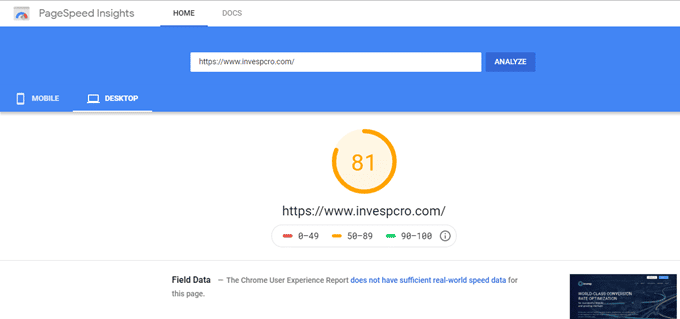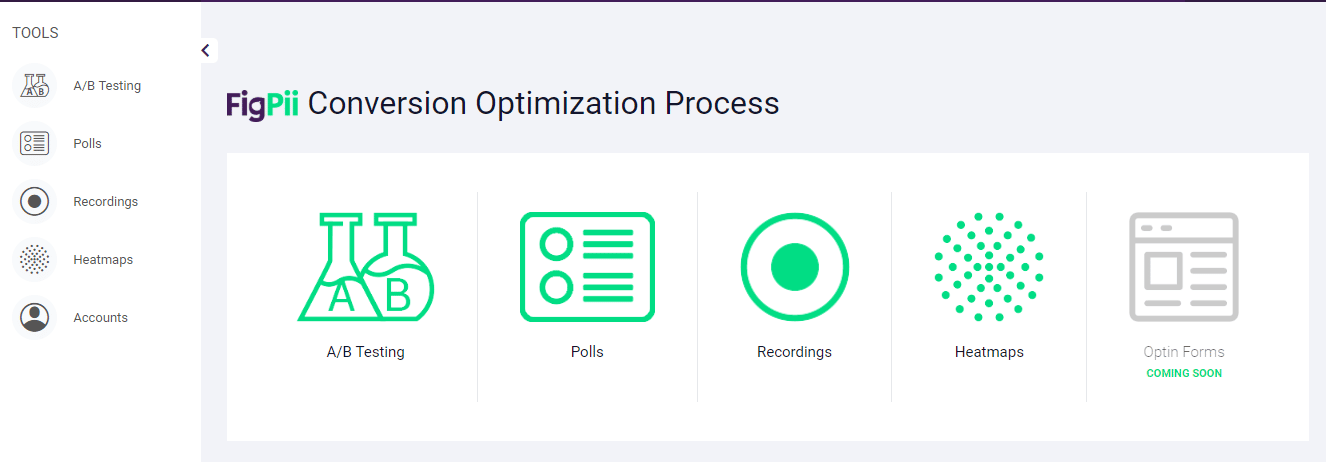Gone are the days when designers, marketers and product developers solely depended on recruiting end-users to get relevant insights into their thought process and experience on a certain website.
Conducting usability studies and watching users navigate through the site had its own pros and it yielded an enormous value that ultimately helped UX designers and marketers deliver a superb user experience.
When it was time to jump into conclusions, some users had trouble explaining the difficulties they faced and some could just give false positives by saying what the moderator wanted to hear.
But this doesn’t diminish the importance of usability testing in the Conversion Rate Optimization program —most optimizers still swear by it even to this day. However, technology has been evolving and there are tons of different tools that can be used to identify conversion problems on a page.
Nowadays, without having to ask users, we can get glimpses of answers (but not full answers) to questions like, where are users getting confused on our site? Why are the users not converting? Which content should be placed above the fold? How are visitors reacting to the content on our site?
And that my dear friends, has been made possible by Session Replay Videos.
What is a session replay video
Session replay videos are recordings that show you how your web users interact and engage with your site. They are the window in which you can see real user activities such as mouse movement, scrolling on pages, taps, clicks on the page, navigating between pages, and total session durations.
Theresa Baiocco Farr, the co-founder of ConversionMax, says this about session replays:
When used effectively, session replay tools offer specific qualitative insight into user behavior, which highlights conversion problems. This is essential for formulating meaningful hypotheses that will have a real impact on the bottom line, rather than just testing button colors.

Also known as visitor recordings, session replay videos offer that virtual power to look over the shoulder of users as they interact with the site.
Knowing what users do, and how they do it makes it easy to improve their experience on the site.
Watching these video recordings leads to identifying unexpected opportunities and gaining insights that may help increase the website conversion rate. As Hans Hoogenboom, a Senior CRO Strategist from iCrossing UK, puts it:
Session replays can show you what users do, how they do it, where they struggle and what blocks them from converting. Although session replays require some analysis, they can show you very vital information that a user can’t always voice. You can also see the behavior of many users, making it an efficient method of research.
Identifying conversion problems using session videos
Invesp has analyzed a considerable amount of session replays over the years, and from that experience, it’s safe to say that each analysis comes with its own set of objectives. However, the ultimate goal in every session replay analysis is always the same: fishing out conversion roadblocks.
A brief background: A few weeks ago, I watched some session recordings (with two of my colleagues) of one of the Invesp clients in the e-commerce space. Our goal was to improve the mobile customer journey from category pages to product pages.
In any project handled by Invesp, FigPii is our reliable go-to-tool for session recordings.
So, as we analyzed the client’s recordings, we were aiming to answer a few questions:
- Are users seeing the CTA?
- Are users running into any errors?
- Are there any bugs on the site?
- Is the UI not confusing the users?

Oh, by the way, the idea of having different people analyze these recordings is not only to watch as many videos as possible, but it also helps keep the confirmation bias (defined in the following section) in check.
The tool had recorded thousands of sessions, so we had to narrow down the volume of videos by filtering to mobile users. But even after filtering, the recordings were still far too many to manage, over a thousand.
We had to further filter the recordings according to date, page visits, browser and session duration —and finally, we were left with recordings that were pertinent to our goal.
Two hours later, 70 different session recordings had been watched at 1X speed and unusual interesting observations were jotted down in the Excel Spreadsheet.
After comparing notes, we noticed that some user behavior patterns kept on recurring. Below are some of the patterns that emerged during the analysis:
- Aimless scrollings: users scrolled up and down, jumping from one page to the other, going back and forth. This indicated that they were not seeing the content they were looking for.
- Low session duration on a certain page: users were immediately leaving the site without seeing some of the product features which was placed below the fold.
- Hesitations: users were indecisive on whether to click the continue button, an indication that they do not trust the seller.
With such observations, what recommendations can you make to the client? When analyzing session videos it is important to keep an open mind and be mindful of every mouse movement. Drawing from the same observations, here are some of the suggestions that can be made to the client.
- Content layout: all of the important content including the call to action has to be placed above the fold so that users see it first as soon as they visit the page.
- Add trust seals: In most cases, a website without any trust seals may raise an element of doubt on website visitors. Adding trust seals is an indication that a site is verified and recognized by the relevant trusted authorities.
As noticed from the example above, these recordings are not a replacement of GA, but the two tools can be used in unison for an effective CRO program.
It is almost impossible to get answers to the why question without watching session replay videos. Even Chris Wallis, an Optimization Consultant from Mezzo Labs concurs:
Session replays provide answers to both the ‘what’ and the ‘why’ behind website performance and user behavior. The value for CRO lies in discovering the ‘why’ – this is where the best ideas for improvement come from: the ones that will make the most money, and generate the most interest within a business.
Session replays analysis tips

Analysis of session replays can be done right using different approaches. But the whole process of analyzing session replays can help uncover insights and identify opportunities when done correctly. The correct way for İnvesp is not just knowing what to observe, but it is making sure that all the fundamentals are followed.
Whether you have been using session replays or you considering using them to identify conversion problems on a page, the tips below will help you get the most out of this tool.
Define your goals for watching the recordings
When analyzing session replay videos, there are no prizes for guessing the starting point!
Tony Robbins might not have been talking about session replays when he said “setting goals is the first step in turning the invisible into the visible,” but his statement vividly describes the first step of analyzing session replay videos.
In the context of session replay analysis, goals are answers you will be aiming to get at the end of your analysis.
So how then do you set goals?
Data obtained from Google Analytics can save as an underlying basis that gives context to your session replay analysis.
For example, GA can tell you the number of users who have completed the desired goal of the website either by making a purchase or filling a form. As a marketer, you’d still want to know why other users exited the site without completing the desired action? You’d want to know how to further optimize your site so as to make more users convert, right?
This is where session replays come in.
Equipped with this GA data, your goal for analyzing these video playbacks will be to find out why users are exiting the site without making a purchase and how you can improve the site so as to increase your return on investment.
Having clear definite goals at your fingertips makes the task a bit easier, come to think of it, it’s always easy to find something, when you know exactly what you are looking for, isn’t it?
User filters to segment your session replay videos
Once you have a clear definite goal, you can then manage the volume of the video recordings, and this helps you gain in-depth insights into what’s really going on beneath the surface.
To help segment recordings, use the filters feature in session replays. The filters feature saves you time by narrowing down the number of videos to focus on. It leaves you with videos that are within the scope of your analysis.

There are many ways to categorize the visitor recording using the recording filters, and these may include the operating system, browser or device type, duration, timeframes, number of pages visited, location e.t.c.
To best use filtration, create different segments of videos using the following criteria:
1. Filter videos of users who landed on the pages
- Start by selecting sessions that landed on the pages you are analyzing
- Look at videos that are at least 30 seconds (or one minute) in length
- Optional: You can segment this group further by filtering user groups (new vs. returning)
- Optional: You can segment this group further by filtering user conversion (converted visitors vs. non-converter)
- Optional: You can segment this group further by looking at different traffic source/mediums (google organic vs. paid or social media traffic)
2. Filter videos of users who exited the site on the pages
- Start by selecting sessions that exited the site from to the pages you are analyzing
- Look at videos that are at least 30 seconds (or one minute) in length
- Optional: You can segment this group further by filtering user groups (new vs. returning)
- Optional: You can segment this group further by filtering user conversion (converted visitors vs. non-converter)
- Optional: You can segment this group further by looking at different traffic source/mediums (google organic vs. paid or social media traffic)

3. Filter all visits that include
- Start by selecting sessions that include visits to the pages you are analyzing (but did not land or exit the site)
- Look at videos that are at least 30 seconds (or one minute) in length
- Optional: You can segment this group further by filtering user groups (new vs. returning)
- Optional: You can segment this group further by filtering user conversion (converted visitors vs. non-converter)
- Optional: You can segment this group further by looking at different traffic source/mediums (google organic vs. paid or social media traffic)
For each of the above filters, you can also watch for different behavior based on time of day (day vs. night) or time of the week (weekday or weekend).
If you follow the above suggestions, you will end up with anywhere from 10 to 20 different groups that you can take a look at.
If you end up with many session replay groups, it will become an overwhelming task. So, you might want to skip the optional steps 3,4,5 to start with. Remember, when watching session replay videos, your goal is to look for actionable insights.
Speed of the recordings

When analyzing session replay videos, the motive is to understand why users do what they are doing on the site, and this demands one to be quite attentive of every mouse movement.
One way of efficiently tracking the mouse movements is making sure that the speed of the videos isn’t too fast (2x or 4x) or too slow (0.5x). The Invesp team watches the session replay videos at 1.5x speed.
Watching recordings at a faster speed may mean covering more ground, but there is a risk of missing out on some of the tiny actions of the users, on the other hand, watching videos at a snail pace may be daunting unless you have the whole day.
Mitigate confirmation bias
If you are like most people, then you have certain beliefs and you tend to look out for information that confirms your views. If any information goes against those beliefs, you dismiss it.
And that folks, is what we refer to as confirmation bias. We all have it.
But, fortunately, there is a way of diagnosing and fixing this issue.

Before analyzing the session replay videos, we start by conducting an expert review on the page. Our team reviews the page using the conversion framework to identify possible conversion issues on it. So, the page is analyzed using the following criteria:
Each of these elements helps us identify possible issues on the page. The team then attempts to validate its findings by watching videos.
So, how do we avoid falling into the confirmation bias trap?
Different team members watch the same set of videos separately. Then they come together to compare notes. Do different team members identify the same patterns and issues in the same videos? Do different team members reach different conclusions watching the same set of videos?
After this process, the team draws patterns and come up with insights by comparing observations.
Search for patterns
Watching session replay videos can be overwhelming. Remember that your goal is to identify general patterns that emerge in different videos.

- Are you noticing that most visitors click on dead areas of the page?
- Are you noticing that a segment of visitors clicks on a particular link on a page and then comes back to the previous page?
- Are you noticing that some of the visitors are filling forms incorrectly?
- Are you noticing that some of the visitors highlight some sections on the page?
Again, try to identify patterns in user behavior.
What makes a good session replay tool?
What makes a good session replay tool is a question which shouldn’t be difficult to answer. I understand there are a lot of factors to consider, but which are the must-have features for Session Replay Videos?
Do you go for the cheapest tool and hope for better functionality? Do you opt for the one that guarantees a high level of security and privacy? What really constitutes a really good session replay tool?
As subjective as this may sound, we can still work out a set of criteria that can be used for evaluating session replay tools. And it would like something like this:
Data retention
Every session replay tool comes with different data retention. And this means that they differ in the number of videos they record, and the time period they keep videos before deleting them. Quite often, people do not know how much storage they really need.

This issue of storage becomes an even bigger issue if the website you need the tool for has a high volume of traffic. Even if the tool has been on the market for years, don’t just assume that every tool on the market has adequate storage.
Is it valuable for your business to watch 3 months old videos?
In most of the cases, sites change on a daily basis. That means that old videos are not very useful. In case, you do want to keep old videos, then make sure that you select a solution that offers at least 3 or 6 months of video retention.
Site speed and performance should not be affected
Your site speed and performance are a critical factor when it comes to Google Search Rankings. Slow sites tend to have a higher bounce rate —and this ultimately affects the site’s conversion rates.
Be wary of session replay tools that may affect your site speed. There might be a great need for you to first check them out on the trial period before acquiring the tool.
Suppose you have decided to use session replay tools, how then do you test for the impact of the tool on your site speed?
One way of doing it is by using Google’s PageSpeed Insights.
Once you have installed the session replay tool, you can then check your website’s performance by entering your URL into the bar:

Click the “Analyze” button to have Google run a quick performance test on your website.
This report will reveal everything you need to know about your site’s speed and performance. Even if it’s not the session replay tool plaguing the speed and performance of your site, Google’s PageSpeed Insights will let you know the exact issues.

Using FigPii as our session replay tool, the Invesp report is an 81/100, just as indicated in the above image.
It’s not great, neither is it bad.
Price
Session replay tools have different prices, and these prices depend on the features of the tool. If you are to pay for any session replay tool, there should be a maximum value for the price you have paid.

It’s wise to go for a tool that comes with other additional features — A/B testing, Polls, Heatmaps, etc. — apart from the session replay feature.
Number of videos you need to record
Different session replay tools allow you to record a different number of videos in a month. Some tools allow you to record tens of thousands of videos. Others might limit you to a few hundred videos.
While the promise of many more videos might sound enticing – having done this myself, I would have to disagree! Let’s say that the tool allows you to record 50,000 videos, do you have the time or energy to watch a thousand of them?
I do not think so.
In most of the cases, you might watch 200 or 300 videos.
Combining heat map data with videos
We all don’t want our websites to be cluttered by different tools from different software companies. In today’s market, not every vendor can brag about giving a tool that neatly integrates heatmap data with video recordings.

A side note about heatmaps: Heat maps are a two-dimensional representation of data in which values are represented by colors. In the context of a website, a heatmap is a data analysis software that uses color to display visitor movements at the same time showing the areas that get more attention on your web page.
Khalid wrote an article on the importance of heat maps in boosting a website’s conversion rate, in the article he gave this short list of what heat maps can help you identify:
- Elements of a website should be made clickable.
- Where should key information be placed on a page?
- What is working on a page and what isn’t.
- If the visitors easily identify CTAs.
- If the instructions are clear enough to lead a user to sales and conversion.
- Which elements of a page are distracting and should be eliminated?
Now back to the topic at hand: so, combining heat maps and session videos will help you to get an in-depth understanding of user behavior at both overall (through heatmaps) and individual (through session replay) levels.
This also translates to 100% data ownership.
Besides having your data in one place, integrated technological tools guarantee your data to be consistent.
Search, Segmenting and Filtering Sessions
I had to save the best for last!
Well, I mentioned the importance of segmenting your visitors while watching different videos above. So, you will need to select a session replay tool has to have appropriate filters that will help choose the specific user sessions you need among many other video recordings.
Remember that filters allow you to analyze your visitor recordings according to various cohorts such as device type, date, and traffic. This gives you in-depth insights into trends and patterns of user behaviors.
To draw actionable conclusions from sessions replays, select a tool that will allow you to search, segment or filter your recordings.
Which are the session replay tools to look out for?
Today the market is flooded with session replay tools. They vary in terms of features, level of security and privacy, functionality, and of course, prices. Before we developed FigPii in 2016, we relied on several tools that were different in analysis capabilities.
If you are interested in giving session replays a try, below is a list of some of the powerful session replay tools to look out for in the world market today:
- FigPii
- CrazyEgg
- Dynatrace
- Freshworks
- Hotjar
- Inspectlet
- AB Tasty
- Lucky Orange
- Wisdom
- Mouseflow
- MouseStats
- SessionCam
- Fullstory
Based on the criteria used above, here’s how these tools compare
| NAME | NUMBER OF VIDEOS | FILTERS | PRICE RANGE |
| FigPii | 10,000 to 500, 000 | Date range, duration, landing page, visited page, exit page, tags, # of pageviews, country, device, OS, browser, user type, favored and played. | $79.99/mo to $499.99/mo |
| Hotjar | 20, 000 to 800, 000 | OS, Browser, Device, Country, User ID, Favorite, Tags, Page count, Duration, Exit URL, LAnding URL, Visited URL | €89/mo to 989/mo |
| Smartlook | 5,000 to 500, 000 | Location, User, Events, Technology, Source, Recordings | $19/mo to $79/mo |
| Inspectlet | 5, 000 to 250, 000 | Session attributes, Navigation Paths, Location, User | $39/mo to $499/mo |
| LuckyOrange | 25,000 to 500, 000 | Browser, IP address, Device, Exit page, Landing page, Location, OS, Referrer, Starred, Duration, Total Pages, Total visits, User-agent | $10/mo to $100/mo |
| Mouseflow | 2, 500 to 100, 000 | Date range, Country, OS, Browser, Traffic Source, Visitor type, Screen resolution, Device, Page count, Duration, Starred, Custom tags e.t.c | $29/mo to $399 |
| MouseStats | 15, 000 to 250, 000 | Location, Browser, Referrer, URL, and OS. | $29/mo to $299/mo |



